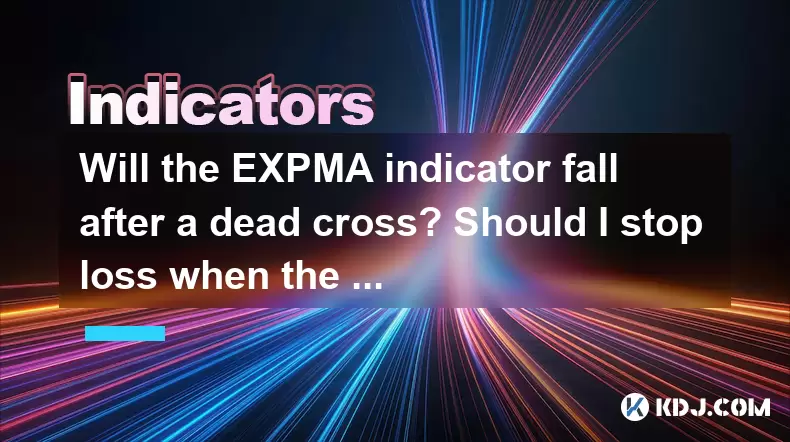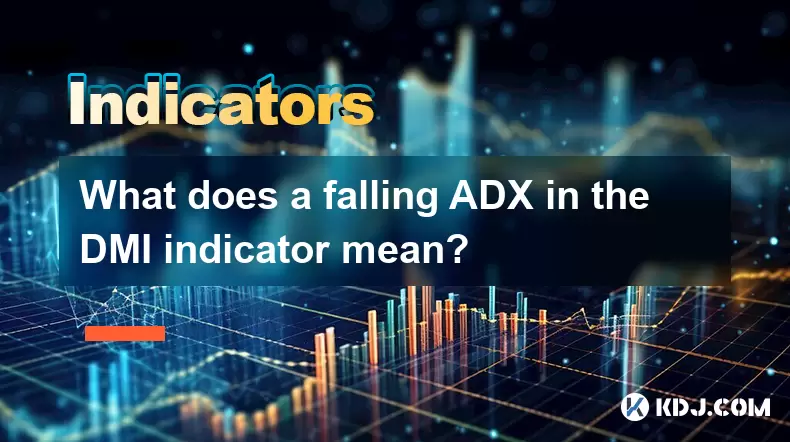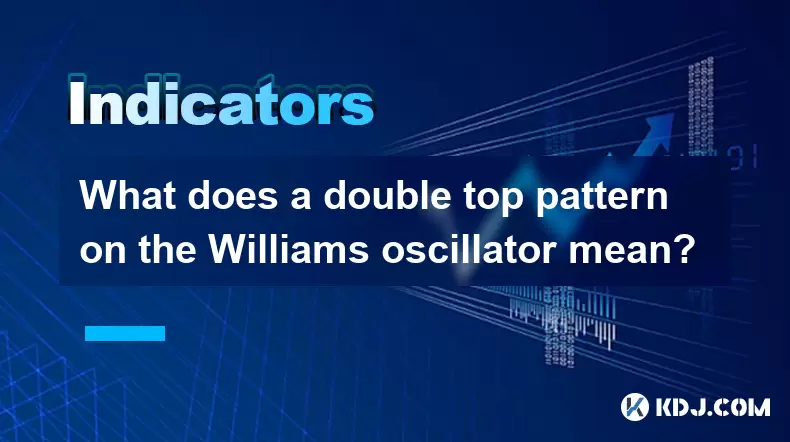-
 Bitcoin
Bitcoin $116700
0.24% -
 Ethereum
Ethereum $3973
4.34% -
 XRP
XRP $3.283
7.68% -
 Tether USDt
Tether USDt $1.000
0.01% -
 BNB
BNB $789.8
2.27% -
 Solana
Solana $176.2
3.31% -
 USDC
USDC $0.9999
0.00% -
 Dogecoin
Dogecoin $0.2238
5.14% -
 TRON
TRON $0.3389
-0.51% -
 Cardano
Cardano $0.7907
4.03% -
 Stellar
Stellar $0.4527
10.02% -
 Hyperliquid
Hyperliquid $41.07
4.27% -
 Sui
Sui $3.794
1.77% -
 Chainlink
Chainlink $19.49
10.40% -
 Bitcoin Cash
Bitcoin Cash $580.9
0.74% -
 Hedera
Hedera $0.2617
4.32% -
 Avalanche
Avalanche $23.41
3.67% -
 Ethena USDe
Ethena USDe $1.001
-0.03% -
 Litecoin
Litecoin $122.4
1.38% -
 Toncoin
Toncoin $3.364
1.49% -
 UNUS SED LEO
UNUS SED LEO $8.988
0.37% -
 Shiba Inu
Shiba Inu $0.00001295
2.82% -
 Uniswap
Uniswap $10.62
5.75% -
 Polkadot
Polkadot $3.922
4.46% -
 Dai
Dai $1.000
0.01% -
 Bitget Token
Bitget Token $4.494
2.15% -
 Monero
Monero $268.0
-1.30% -
 Cronos
Cronos $0.1523
3.68% -
 Pepe
Pepe $0.00001127
4.43% -
 Aave
Aave $285.4
4.85%
Will the EXPMA indicator fall after a dead cross? Should I stop loss when the short-term line pulls back to the long-term line?
After a dead cross, the EXPMA indicator typically continues to fall, but consider setting a stop loss if the short-term line pulls back to the long-term line, assessing market context first.
Jun 01, 2025 at 11:19 am

The EXPMA (Exponential Moving Average) indicator is a popular tool used by cryptocurrency traders to analyze market trends and make informed trading decisions. When it comes to understanding the behavior of the EXPMA indicator after a dead cross and determining when to stop loss, there are several key points to consider.
Understanding the EXPMA Indicator
The EXPMA indicator is a type of moving average that places more weight on recent price data, making it more responsive to new information compared to a simple moving average. It consists of two lines: a short-term EXPMA and a long-term EXPMA. The short-term line reacts more quickly to price changes, while the long-term line provides a broader view of the market trend.
What is a Dead Cross?
A dead cross occurs when the short-term EXPMA line crosses below the long-term EXPMA line. This event is often interpreted as a bearish signal, suggesting that the market may be entering a downward trend. Traders use this signal to prepare for potential price declines and to adjust their trading strategies accordingly.
Will the EXPMA Indicator Fall After a Dead Cross?
After a dead cross, the EXPMA indicator is likely to continue falling as long as the bearish trend persists. The short-term EXPMA line will generally remain below the long-term EXPMA line, reinforcing the bearish sentiment. However, it's important to note that the market can be unpredictable, and there may be instances where the indicator reverses course due to sudden bullish movements.
Should I Stop Loss When the Short-Term Line Pulls Back to the Long-Term Line?
Deciding when to implement a stop loss can be crucial for managing risk in cryptocurrency trading. When the short-term EXPMA line pulls back to the long-term EXPMA line after a dead cross, it may indicate a temporary pause or a potential reversal in the bearish trend. Here are some considerations for setting a stop loss in this scenario:
- Assess the Market Context: Look at other technical indicators and market conditions to determine if the pullback is a genuine reversal or just a temporary fluctuation.
- Set a Clear Stop Loss Level: Determine a specific price level at which you will exit the trade to minimize losses. This level should be based on your risk tolerance and trading strategy.
- Monitor the Price Action: Keep a close eye on how the price behaves as the short-term line approaches the long-term line. If the price continues to decline after the pullback, it may be a sign to maintain or adjust your stop loss.
Implementing a Stop Loss: A Step-by-Step Guide
If you decide to set a stop loss when the short-term EXPMA line pulls back to the long-term EXPMA line, follow these detailed steps:
- Open Your Trading Platform: Log into your preferred cryptocurrency trading platform.
- Navigate to Your Open Position: Find the specific trade you want to set a stop loss for.
- Access the Order Menu: Click on the trade to open the order management menu.
- Select 'Stop Loss': Choose the option to set a stop loss order.
- Enter the Stop Loss Price: Input the price level at which you want the stop loss to trigger. This should be the price at which the short-term EXPMA line is expected to touch the long-term EXPMA line.
- Confirm the Order: Review your settings and confirm the stop loss order.
Using Additional Indicators for Confirmation
To increase the reliability of your trading decisions, consider using additional technical indicators alongside the EXPMA indicator. Some popular indicators that can complement the EXPMA include:
- Relative Strength Index (RSI): Helps identify overbought or oversold conditions in the market.
- Moving Average Convergence Divergence (MACD): Provides insights into the momentum and potential trend reversals.
- Bollinger Bands: Offers a visual representation of volatility and potential price breakouts.
Analyzing Historical Data
Analyzing historical data can provide valuable insights into how the EXPMA indicator behaves after a dead cross and during pullbacks. By reviewing past price movements and indicator patterns, you can better anticipate potential outcomes and refine your trading strategy. Look for instances where the short-term EXPMA line pulled back to the long-term line after a dead cross and observe the subsequent price action.
Risk Management Strategies
Effective risk management is essential when trading cryptocurrencies, especially when dealing with the EXPMA indicator and stop loss decisions. Here are some strategies to consider:
- Position Sizing: Determine the appropriate size of your trade based on your overall portfolio and risk tolerance.
- Diversification: Spread your investments across different cryptocurrencies to mitigate risk.
- Regular Monitoring: Continuously monitor your trades and the market to make timely adjustments to your stop loss levels.
Psychological Aspects of Trading
Trading cryptocurrencies can be emotionally challenging, especially when dealing with indicators like the EXPMA and stop loss decisions. It's important to maintain a disciplined approach and not let emotions drive your trading decisions. Stick to your trading plan and avoid making impulsive moves based on short-term market fluctuations.
Frequently Asked Questions
Q: Can the EXPMA indicator be used for all cryptocurrencies?
A: Yes, the EXPMA indicator can be applied to any cryptocurrency that has sufficient price data. However, the effectiveness of the indicator may vary depending on the volatility and trading volume of the specific cryptocurrency.
Q: How often should I check the EXPMA indicator for changes?
A: The frequency of checking the EXPMA indicator depends on your trading style. For short-term traders, checking the indicator every few hours or even more frequently may be necessary. For long-term traders, daily or weekly checks may suffice.
Q: What other indicators can I use alongside the EXPMA to confirm a dead cross?
A: In addition to the EXPMA, you can use indicators like the MACD, RSI, and Bollinger Bands to confirm a dead cross. These indicators can provide additional insights into market momentum, overbought/oversold conditions, and volatility.
Q: Is it possible for the EXPMA indicator to give false signals?
A: Yes, like all technical indicators, the EXPMA can give false signals. It's important to use the EXPMA in conjunction with other indicators and to consider the broader market context to minimize the risk of acting on false signals.
Disclaimer:info@kdj.com
The information provided is not trading advice. kdj.com does not assume any responsibility for any investments made based on the information provided in this article. Cryptocurrencies are highly volatile and it is highly recommended that you invest with caution after thorough research!
If you believe that the content used on this website infringes your copyright, please contact us immediately (info@kdj.com) and we will delete it promptly.
- Roman Storm, Funding Effort, and the Looming Defense Retrial: A New York Minute on the Tornado Cash Case
- 2025-08-09 02:50:14
- Crypto's Wild Ride: XRP, Dogecoin, and the Altcoin Surge You Can't Ignore
- 2025-08-09 02:50:14
- Elon Musk, Bitcoin, and the Enduring Power of Approval: A Crypto Love Story?
- 2025-08-09 03:50:15
- Ruvi AI: The Next Big Thing After Ripple on CoinMarketCap?
- 2025-08-09 03:50:15
- Floki Price Surges: Elliott Wave and Fibonacci Setups Point to Potential Gains!
- 2025-08-09 02:30:16
- Pepe Price, RTX (Remittix?) & the $10K ETH Dream: NYC Crypto Chatter
- 2025-08-09 02:30:16
Related knowledge

What does it mean when the TRIX indicator suddenly diverges downward after a long period of convergence?
Aug 09,2025 at 12:56am
Understanding the TRIX Indicator in Cryptocurrency TradingThe TRIX indicator, or Triple Exponential Average, is a momentum oscillator used in technica...

Why is the rise limited after a MACD bottoming divergence?
Aug 09,2025 at 12:07am
Understanding MACD Bottoming Divergence in Cryptocurrency TradingThe MACD (Moving Average Convergence Divergence) is a widely used technical indicator...

What does it mean when the OBV continues to rise but the price is trading sideways?
Aug 08,2025 at 10:35pm
Understanding On-Balance Volume (OBV)On-Balance Volume (OBV) is a technical indicator that uses volume flow to predict changes in stock or cryptocurre...

What does a falling ADX in the DMI indicator mean?
Aug 09,2025 at 03:16am
Understanding the ADX and DMI Indicator FrameworkThe DMI (Directional Movement Index) is a technical analysis tool developed by J. Welles Wilder to id...

What does a double top pattern on the Williams oscillator mean?
Aug 09,2025 at 02:36am
Understanding the Williams %R OscillatorThe Williams %R oscillator is a momentum indicator developed by Larry Williams to identify overbought and over...

What is a nonce and how is it used in Proof of Work?
Aug 04,2025 at 11:50pm
Understanding the Concept of a Nonce in CryptographyA nonce is a number used only once in cryptographic communication. The term 'nonce' is derived fro...

What does it mean when the TRIX indicator suddenly diverges downward after a long period of convergence?
Aug 09,2025 at 12:56am
Understanding the TRIX Indicator in Cryptocurrency TradingThe TRIX indicator, or Triple Exponential Average, is a momentum oscillator used in technica...

Why is the rise limited after a MACD bottoming divergence?
Aug 09,2025 at 12:07am
Understanding MACD Bottoming Divergence in Cryptocurrency TradingThe MACD (Moving Average Convergence Divergence) is a widely used technical indicator...

What does it mean when the OBV continues to rise but the price is trading sideways?
Aug 08,2025 at 10:35pm
Understanding On-Balance Volume (OBV)On-Balance Volume (OBV) is a technical indicator that uses volume flow to predict changes in stock or cryptocurre...

What does a falling ADX in the DMI indicator mean?
Aug 09,2025 at 03:16am
Understanding the ADX and DMI Indicator FrameworkThe DMI (Directional Movement Index) is a technical analysis tool developed by J. Welles Wilder to id...

What does a double top pattern on the Williams oscillator mean?
Aug 09,2025 at 02:36am
Understanding the Williams %R OscillatorThe Williams %R oscillator is a momentum indicator developed by Larry Williams to identify overbought and over...

What is a nonce and how is it used in Proof of Work?
Aug 04,2025 at 11:50pm
Understanding the Concept of a Nonce in CryptographyA nonce is a number used only once in cryptographic communication. The term 'nonce' is derived fro...
See all articles

























































































